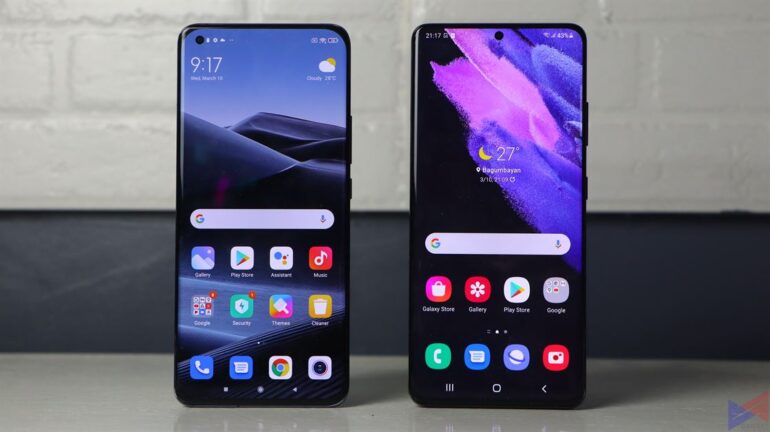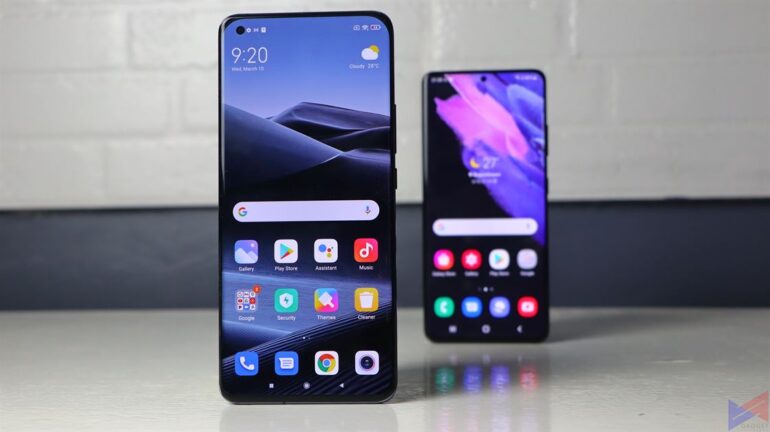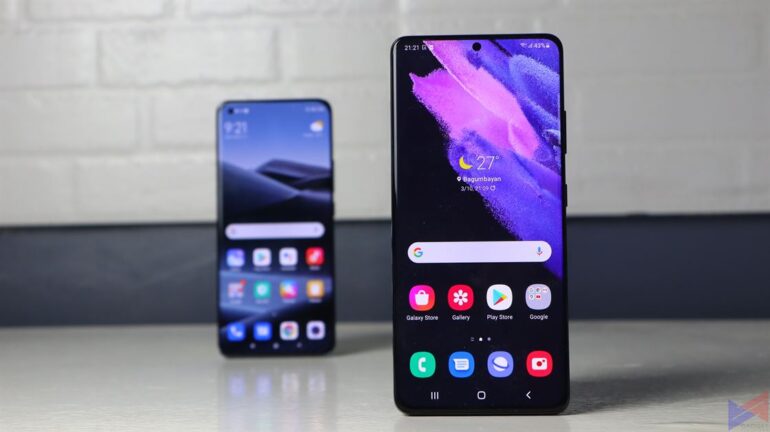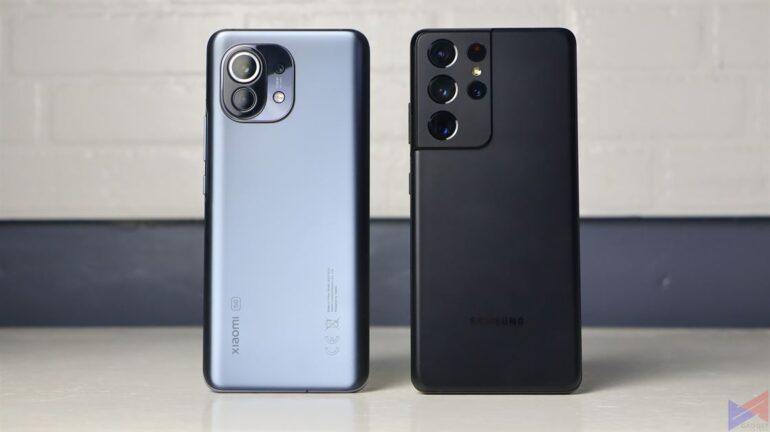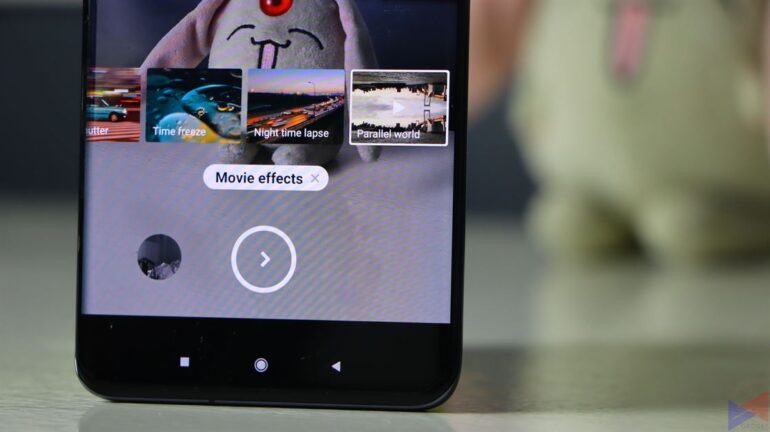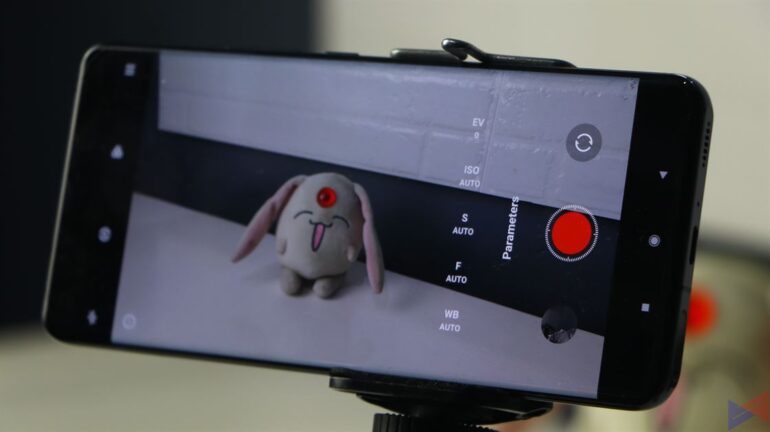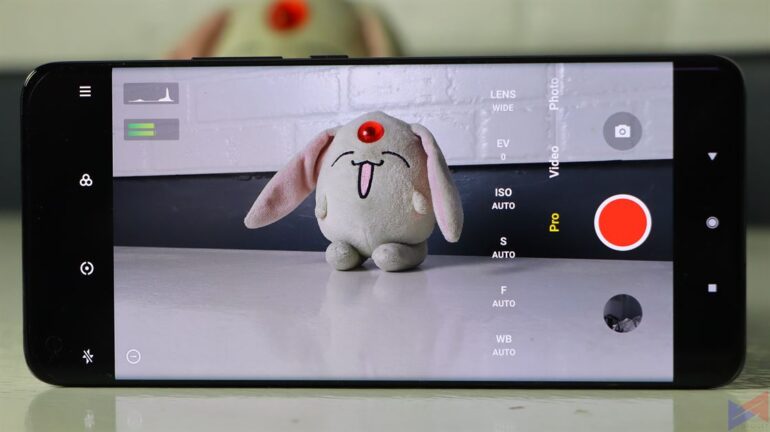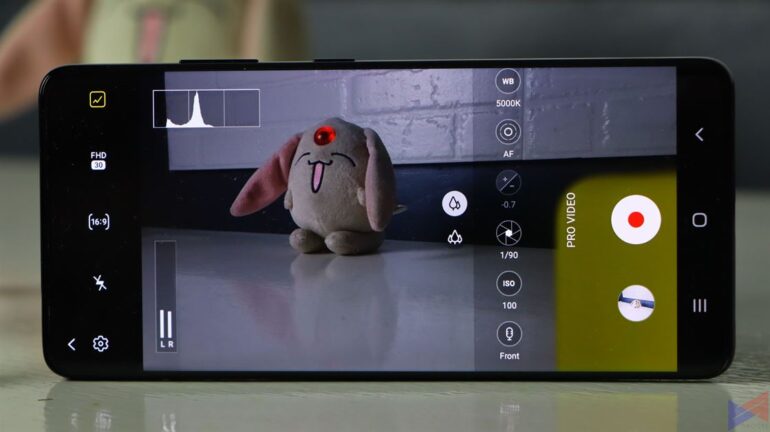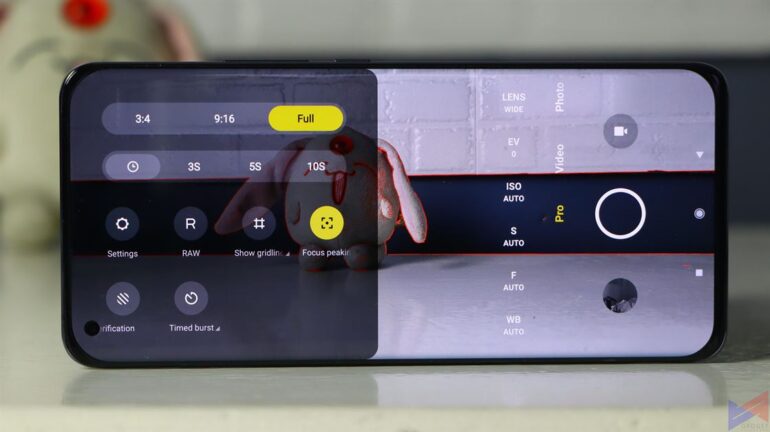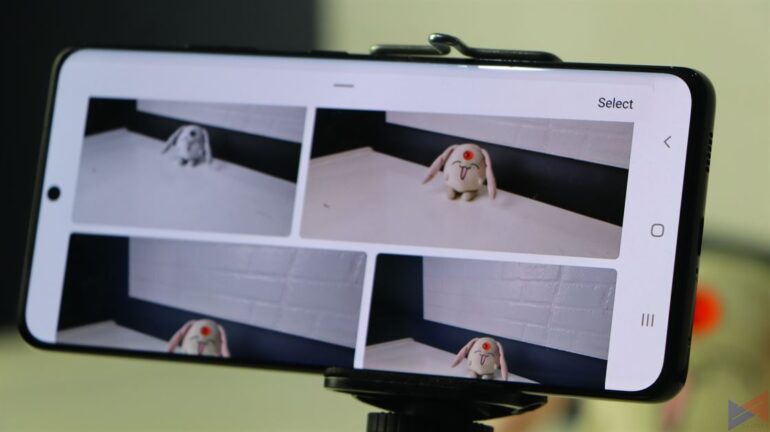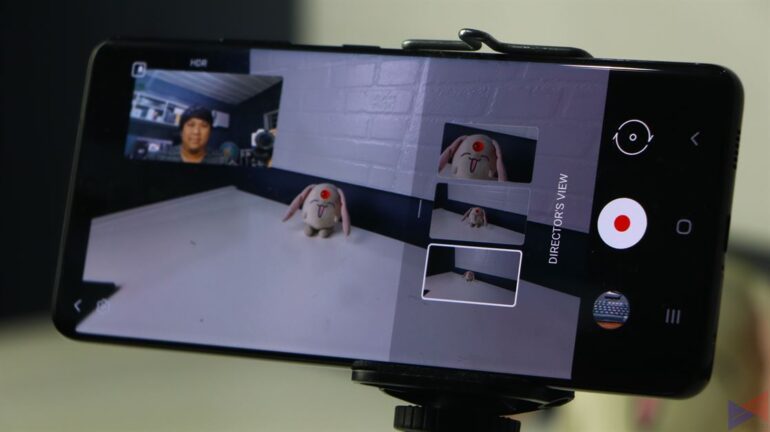Introduction
Many years back, being a content creator meant that you had to have a place to shoot, a good-enough camera, microphone, and a lot more. It simply was not as accessible. Fast forward to 2021, and virtually anyone can be a content creator, and at the very least, they will only need one device – a phone.
Smartphones are at a point when they can already do a certain equivalent of what four pieces of equipment would do a few years back. Thanks to AI and significantly more powerful hardware, one can simply take a video, do some editing, and upload it to social media to be seen by an audience in mere minutes.
Today, it is going to be a battle between two smartphones geared for content creation.
On one side is the newly launched Mi 11 from Xiaomi, which packs a Snapdragon 888 SoC, and uses a triple rear camera system that allows it to become extremely versatile in adapting to different shooting conditions. It gives the user creative freedom to be playful around with content and give it a bit of twist. It is aimed at becoming a powerful tool for creating quality content at a more accessible price point.
On the other side is Samsung’s current flagship, the Galaxy S21 Ultra 5G, which is also a phone that is marketed for its pro-grade photo and video capabilities. Sporting a quad-camera setup, this phone also packs a bag of its own tricks that makes the life of a content creator much easier.
Camera Composition
Let us start by a comparison of camera setups, since these are the primary components that allow users to capture content.
| Cameras | Xiaomi Mi 11 | Samsung Galaxy S21 Ultra 5G |
|---|---|---|
| Rear | 108MP Wide-Angle, OIS, f/1.85 | 108MP Wide-Angle, OIS, f/1.8 |
| 13MP Ultra-Wide, f/2.4 | 12MP Ultra-Wide, Dual Pixel, f/2.2 | |
| 5MP Telemacro, f/2.4 | 10MP 10x Dual Pixel, OIS, f/4.9 | |
| 10MP 3x Dual Pixel, OIS, f/2.4 | ||
| Front | 20MP, f/2.2 | 40MP, f/2.2 |
While both devices can generally cater to most typical shooting scenarios, the Mi 11’s telemacro camera will be of help for shooting extremely close-up photos. While the S21 Ultra 5G does not have a macro camera, it makes up for it with two telephoto units – one for close range, and one for long-range. This combination allows it to achieve 100x zoom with improved quality. The Mi 11 can go up to 30x zoom.
One more thing to note is that the S21 Ultra 5G has a feature called frame lock which basically “locks” on to a certain frame so you can get a more stable shot when shooting at 30x and 100x.
Video Recording
| Device | Camera | 720 30 | 1080 30 | 1080 60 | 4K 30 | 4K 60 | 8K 24 | 8K 30 |
|---|---|---|---|---|---|---|---|---|
| Mi 11 | Wide | Yes | Yes | Yes | Yes | Yes | Yes | Yes |
| Ultra-Wide | Yes | Yes | Yes | Yes | No | No | No | |
| Telemacro | Yes | Yes | Yes | Yes | Yes | Yes | Yes | |
| Front | Yes | Yes | Yes | No | No | No | No | |
| S21 Ultra | Wide | Yes | Yes | Yes | Yes | Yes | Yes | No |
| Ultra-Wide | Yes | Yes | Yes | Yes | Yes | Yes | No | |
| Tele1 | Yes | Yes | Yes | Yes | Yes | Yes | No | |
| Tele2 | Yes | Yes | Yes | Yes | Yes | Yes | No | |
| Front | Yes | Yes | Yes | Yes | Yes | No | No |
Both phones also feature image stabilization – the Mi 11 has OIS on its wide-angle unit which means you will also be able to take wide-angle videos with almost no visible shakes, while the Galaxy S21 Ultra 5G also offers OIS on both its Telephoto lenses. This gives it a slight advantage when capturing steady videos up-close. Do not get me wrong, most would probably use the main lens, but having OIS on its other lenses adds a certain level of value and flexibility in terms of creating more types of content.
8K video is still at a young stage, and not many have access to an 8K TV which can take advantage of the content. Still, having 24fps which presents a more cinematic view is good to have. The Mi 11 even boasts 8K 30fps video recording on its Wide and Telemacro lens, which adds a bit of versatility, considering it’s price.
For VLOGS, both devices can shoot 1080p 30/60 on the front camera, which is what most people would probably use. The Galaxy S21 Ultra 5G does offer higher resolutions of up to 4K 60 fps, and even a wide-angle mode for selfies.
| Device | Feature | Works On |
|---|---|---|
| Xiaomi Mi 11 | Steady Video | Wide-Angle, 1080p 30 |
| Steady Video Pro | Wide-Angle, 1080p 30 | |
| Samsung Galaxy S21 Ultra 5G | Super Steady | Wide-Angle, 1080p 30/60 |
| Ultra-Wide, 1080p 30/60 |
For videos, both phones can apply stabilization, but the Galaxy S21 Ultra 5G can also apply it to its ultra-wide unit and can also stabilize at 60fps.
Dual View
Both devices can shoot videos using the front and rear cameras at the same time.
The main difference is that the Mi 11’s Dual View only allows you to use the main lens in combination with the front camera, but the Galaxy S21 Ultra 5G’s Director’s View lets you choose or even cycle between the main lens, the ultra-wide unit, and even one of the telephoto lenses.
Night Mode
Let us face it, a lot of phones will do well in both photo and video so long as there is enough light, but when the sun sets, that is where we can usually separate the good and the great.
| Device | Feature | Works On |
|---|---|---|
| Xiaomi Mi 11 | Night Mode | All Lenses |
| Samsung Galaxy S21 Ultra 5G | Night Mode | All Lenses |
In this regard, both the Mi 11 and S21 Ultra 5G offer a dedicated Night Mode for all lenses, which means it will boil down to the purpose of the shot.
The Mi 11 also boasts Ultra Night Video, which uses AI-powered noise reduction in combination with EIS, OIS, its large 1/1.33” sensor, and 4-in-1 Super Pixel to achieve detailed and great-looking low-light shots.
Video Filters
Both the Mi 11 and Galaxy S21 Ultra 5G offer a bunch of filters that you can use to add a dramatic effect to your videos. It just boils down to personal preference as to which filters are better.
| Mi 11 (Video) | Galaxy S21 Ultra 5G (Video) |
| Rome | Warm |
| Nordic | Cool |
| Encounter | Lolli |
| Gold Vibes | Frosty |
| Summer | Blossom |
| Carmen | Ivory |
| Slumber | Fade |
| Fantasy | Soft |
| Tango | KissMe |
| Lime | Grayscale |
| Mystery | Classic |
| BBP | B & W |
| Color Focus |
In addition, the Mi 11 can utilize the same filters in both Video and Pro Video mode, giving the content creator additional tools to play with to add visual flair.
Mi 11: Movie Effects
The Xiaomi Mi 11 offers several pre-set movie effects that you can use to add a dash of fanciness to your content.
One good example is Magic Zoom which basically lets you do a background-only zoom, keeping the subject in the same position.
Then there’s Freeze Frame, which lets you create “clones” of yourself that disappear as you move across the frame.
There’s also Parallel World, which gives you a two-sided view of your scene.
Other effects that you can explore:
- Night Time-lapse – simplifies long shots
- Slow Shutter – lets you create unique artistic blurs
- Time Freeze – lets you isolate or “freeze” a certain section of your video while the remaining section moves.
Mi 11: Pro Time-Lapse Mode
Not present in the Galaxy S21 Ultra 5G, the Mi 11’s Time-Laps Mode allows for manual adjustments of certain parameters like Exposure Value, ISO, Shutter Speed, Focus, and White Balance. You can also manually set how long the time-lapse will be shot, and the speed at which it will be captured. There is even a guide on which settings to use depending on the scenario.
You can shoot a time-lapse from a resolution/fps of 720p 30 to 1080p 30. Super Macro Mode can also be enabled when shooting a time-lapse.
Pro Mode Comparison
For seasoned shooters who want to tinker with individual settings for each shot, both the Mi 11 and the Galaxy S21 Ultra 5G offer a Pro Mode that lets the user adjust various parameters.
Xiaomi Mi 11
| Content Type | Lens | EV | ISO | Shutter Speed | Focus | White Balance |
| Photos | Wide | Yes | Yes | Yes | Yes | Yes |
| Ultra-Wide | Yes | Yes | Yes | No | Yes | |
| Telemacro | Yes | Yes | Yes | Yes | Yes | |
| Videos | Wide | Yes | Yes | Yes | Yes | Yes |
| Ultra-Wide | Yes | Yes | Yes | No | Yes | |
| Telemacro | Yes | Yes | Yes | Yes | Yes |
| Content Type | Lens | 720 30 | 1080 30 | 1080 60 | 4K 30 | 4K 60 | 8K 30 |
| Videos | Wide | Yes | Yes | Yes | Yes | Yes | Yes |
| Ultra-Wide | Yes | Yes | Yes | Yes | No | No | |
| Telemacro | Yes | Yes | No | No | No | No |
Samsung Galaxy S21 Ultra 5G
| Content Type | Lens | EV | ISO | Shutter Speed | Focus | White Balance |
| Photos | Wide | Yes | Yes | Yes | Yes | Yes |
| Ultra-Wide | Yes | Yes | Yes | Yes | Yes | |
| Videos | Wide | Yes | Yes | Yes | Yes | Yes |
| Ultra-Wide | Yes | Yes | Yes | Yes | Yes |
| Content Type | Lens | 720 30 | 1080 24 | 1080 30 | 1080 60 | 1080 120 | 4K 24 | 4K 30 | 4K 60 | 8K 24 |
| Videos | Wide | Yes | Yes | Yes | Yes | Yes | Yes | Yes | Yes | Yes |
| Ultra-Wide | Yes | Yes | Yes | Yes | Yes | Yes | Yes | Yes | Yes |
While Galaxy S21 Ultra 5G can only shoot in Pro mode on its wide and ultra-wide lenses, the Mi 11 can shoot in Pro mode on all its lenses, giving it the edge.
In addition, the S21 Ultra 5G also allows for adjusting the contrast, highlight, shadow, saturation, and tint. Both devices can also capture photos in RAW format for photos. For videos, the Mi 11 also allows for shooting in LOG format, which gives the content creator more control over the overall look and composition of the raw file.
Mi 11 also features Smart noise reduction, while the S21 Ultra 5G can shoot HDR10+ videos and allows the user to set the directional sound pickup setting for the microphone.
Both the S21 Ultra 5G and Mi 11 feature focus peaking, which allows you to preview the area that is in focus even before shooting as well as a histogram. The former also has tracking focus, which lets you keep a moving subject in focus, though this can only be used for the ultra-wide lens.
Apart from that, the Mi 11 also boasts the following features that can help content creators capture high-quality videos.
- Meter Mode: There are several options to choose from: average, center-weighted and spot metering.
- Average metering considers all areas of the image, which works best for evenly lit scenes.
- Center-weighted metering mainly focuses, by virtue of what it is called, puts more focus on the central area of the frame and gives due consideration to the brightness of the surrounding area, making it perfect for shooting subjects in the center of the frame.
- Spot metering covers the area in one spot, which gives you precise control over the exposure.
- Exposure Verification gives users a view of what is over and underexposed in the frame
Samsung Galaxy S21 Ultra 5G: Other Features
A feature inherited from the S20, Single Take 2.0 allows the phone to produce a set of ready-to-share photos and videos in one shot.
Another feature of the Galaxy S21 Ultra 5G is the Live Thumbnails in Director’s View, which shows a live view from all the lenses, and allows the user to seamlessly change between lenses even while shooting a video.
Mi 11: Specifications
Mi 11 sports a 6.81-inch AMOLED DotDisplay with 120Hz refresh rate with HDR10+ support, Gorilla Glass Victus protection, and 1500 nits max brightness. The device also boasts Dual Speakers with Sound by HARMAN KARDON and has two colors – Midnight Gray and Horizon Blue.
Under the hood is a Qualcomm Snapdragon 888 SoC along with 8GB of LPDDR5 RAM and 256GB of UFS 3.1 storage. It packs a 4,600mAh battery with 55W wired and 50W wireless fast charging, as well as 10W reverse charging. The device ships with a 55W GaN charger in the box which allows it to go from 0 to 100% in just 45 minutes.
Other features include Hi-Res Audio/Wireless Certification, an in-display fingerprint scanner, NFC, an IR Blaster, and Bluetooth 5.2. It’s priced at PhP36,990 and will be available at Authorized Mi Stores and other official retailers in the Philippines starting March 13, 2021.
Summary
Advantages of the Mi 11 vs Samsung Galaxy S21 Ultra 5G
- Macro Capability
- 8K 30fps Video Recording on two lenses
- Creative Movie Effects
- Pro Time-Lapse Mode
- Shoot videos in LOG Format
- Meter Mode
- Exposure Verification
- Smart Noise Reduction
- Can use Pro Mode on its Telemacro camera
- More dramatic video filters
- Can use Super Macro Mode for a time-lapse
- Offers several filters in both normal and Pro Video modes
- Ultra Night Video using software and hardware level enhancements
Advantages of Samsung Galaxy S21 Ultra 5G vs the Mi 11
- 100x Hyper Space Zoom
- Can shoot 4K and 8K videos on its front camera
- OIS on wide-angle + both telephoto lenses
- Can shoot wide-angle selfies
- Super Steady at 30/60fps
- Wide range of resolutions for Pro Video
- Can shoot HDR10+ videos
- Has tracking focus
- Single Take 2.0
- Live Thumbnails
- Vlogger View (Better implementation of simultaneous front and rear camera video recording)
Verdict
The Galaxy S21 Ultra 5G, has its own bag of tricks such as 100x Hyper Space Zoom, 4K and even 8K video recording on its front camera, offers a wide selection of resolutions in Video Mode (Pro), and allows for quick sharing using its single take feature. These make it great device for content creation, for those who are willing to pay the premium.
The Mi 11 is an excellent device for content creators who want to add a lot of fanciness to their content. Thanks to its unique movie effects, one can simply shoot a bunch of clips and it will automatically create a short video with transitions and effects taken care of, ready-to-share.
The device also boasts 4K and 8K video recording, and its pro-mode and pro time-laps mode gives seasoned users the creative freedom to blend individual settings to their preferences. It basically gives you most of the tools you will need to publish content as quickly as possible, and even makes external editing easier with LOG and RAW support,
It delivers all the essentials one will need to create quality content plus a bit more, ALL FOR A FRACTION OF THE COST, making this a definite contender for budding content creators among flagship devices.
Emman has been writing technical and feature articles since 2010. Prior to this, he became one of the instructors at Asia Pacific College in 2008, and eventually landed a job as Business Analyst and Technical Writer at Integrated Open Source Solutions for almost 3 years.

